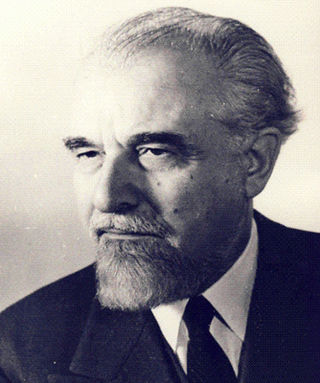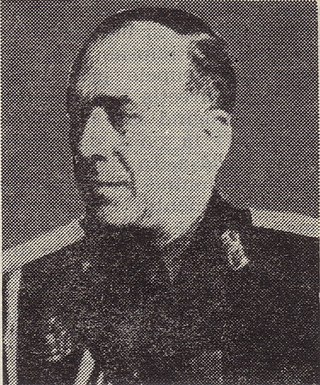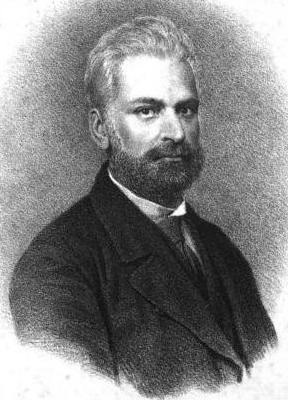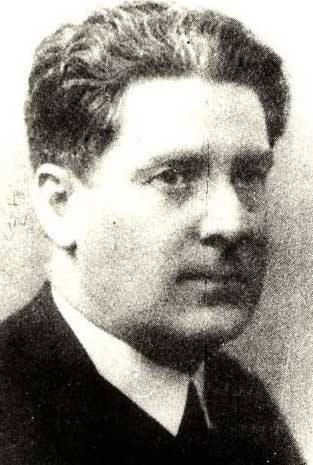| |||||
| Decades: | |||||
|---|---|---|---|---|---|
| See also: | |||||
Events from the year 1947 in Romania. The year saw the abdication of Michael I of Romania and foundation of the Romanian People's Republic.
| |||||
| Decades: | |||||
|---|---|---|---|---|---|
| See also: | |||||
Events from the year 1947 in Romania. The year saw the abdication of Michael I of Romania and foundation of the Romanian People's Republic.



Constantin Angelescu was a Romanian politician who served as ad interim/acting Prime Minister of Romania for five days, between 30 December 1933 and 3 January 1934.

Ștefan Voitec was a Romanian Marxist journalist and politician who held important positions in the state apparatus of Communist Romania. Debuting as a member of the Socialist Party of Romania in his late teens, he formed the Socialist Workers Party of Romania, then the United Socialist Party, while also engaging in human rights activism and advocating prison reform. The mid-1930s brought him into contact with the Romanian Communist Party, with whom he formed tactical alliances; however, he rejected its political line, and was for a while known as a Trotskyist. In 1939, he joined the consolidated Social Democratic Party, which reunited various socialist groups outlawed by the National Renaissance Front. During World War II, despite ostensibly withdrawing form political life to do research, Voitec served as the party's Secretary and joined the anti-fascist underground. Some reports suggest that he was also a committed anti-communist, critical of the Soviet Union to the point on endorsing war in the East. As a war correspondent, Voitec made contributions to Nazi propaganda, an issue which made him vulnerable to blackmail in later decades.

Ștefan Dimitrescu was a Romanian Post-impressionist painter and draftsman.

Mircea Aurel Vulcănescu was a Romanian philosopher, economist, ethics teacher, sociologist, and politician. Undersecretary at the Ministry of Finance from 1941 to 1944 in the Nazi-aligned government of Ion Antonescu, he was arrested in 1946 and convicted as a war criminal.

Gheorghe (George) I. Brătianu was a Romanian politician and historian. A member of the Brătianu family and initially affiliated with the National Liberal Party, he broke away from the movement to create and lead the National Liberal Party-Brătianu. A history professor at the universities of Iași and Bucharest, he was elected titular member of the Romanian Academy. Arrested by the Communist authorities in 1950, he died at the notorious Sighet Prison.
Romanian architecture is very diverse, including medieval, pre-World War I, interwar, postwar, and contemporary 21st century architecture. In Romania, there are also regional differences with regard to architectural styles. Architecture, as the rest of the arts, was highly influenced by the socio-economic context and by the historical situation. For example, during the reign of King Carol I (1866–1914), Romania was in a continuous state of reorganization and modernization. In consequence, most of the architecture was designed by architects trained in Western European academies, particularly the École des Beaux-Arts, and a big part of the downtowns of the Romanian Old Kingdom were built during this period.

Ilie Crețulescu was a Romanian major-general during World War II.
Doamna Ecaterina Cercheza was a Circassian noblewoman who became Princess consort of Moldavia by marriage to Vasile Lupu. As reported by Evliya Çelebi, her mother was the sister of Koca Dervish Mehmed Pasha who was the Grand Vizier of the Ottoman Empire from 1653 to 1654, and her sister was married to Islam III Giray, Khan of Crimea (1644–1654). She played a major role on personal and political decisions of her husband and son Ştefăniţă Lupu. Well known for her philanthropic activities, Doamna Ecaterina Cercheza became patron of the Moldavian monasteries and churches. She developed a strong reputation for her diplomatic and negotiating skills in time of crisis, in the absence of her husband and son.

Gheorghe Sion was a Moldavian, later Romanian poet, playwright, translator and memoirist.

A. T. Laurian National College is a public day high school in Botoșani, Romania, located at 19 Nicolae Iorga Street.

Petre Andrei was a Romanian sociologist, philosopher, and politician who served as Education Minister in 1938–1940.

Constantin D. Nicolescu was a Romanian career army officer, and Minister of Defense in July–September 1940.

Victor Spinei is Emeritus Professor of history and archaeology at the Alexandru Ioan Cuza University, member and vice president of the Romanian Academy. He is a specialist on the history of Romania and the Romanian people in the Early and High Middle Ages, the history of migratory peoples in Eastern and Southeastern Europe during this period, and the production and circulation of cult objects in Eastern and Southeastern Europe during the Middle Ages.

Scarlat Vasile Vârnav, or Sofronie Vârnav, was a Moldavian and Romanian political figure, philanthropist, collector, and Orthodox clergyman. The scion of an aristocratic family, he was made to study for a career in the church, but fled Moldavia and studied abroad. Acquainted with the Romanian liberal movement, and an ardent Romanian nationalist, he helped establish bodies of intellectuals dedicated to cultural and political cooperation across the Danubian Principalities and beyond—including, in 1846, the Romanian library of Paris. His purchase of mainly Baroque paintings, donated by him to Academia Mihăileană, forms the core of the Iași Museum of Art.

Alecu Beldiman, common rendition of Alexandru Beldiman, also known as Alecul or Aleco Beldiman, was a Moldavian statesman, translator and poet, one of the forerunners of Romanian nationalism. A scion of the boyar elite, he was the eldest son of Vornic Gheorghe Beldiman, and the nephew-in-law of chronicler Enache Kogălniceanu. Alecu himself held high commission in the Moldavian military forces and bureaucracy, but secretly resented the Phanariote regime which had awarded them. He may have affiliated with a loose group known as the "National Party", championing an alliance between Moldavia's independence from the Ottoman Empire and support for the French Republic.

Romanian Revival architecture is an architectural style that has appeared in the late 19th century in Romanian Art Nouveau, initially being the result of the attempts of finding a specific Romanian architectural style. The attempts are mainly due to the architects Ion Mincu (1852–1912), and Ion N. Socolescu (1856–1924). The peak of the style was the interwar period. The style was a national reaction after the domination of French-inspired Classicist Eclecticism. Apart from foreign influences, the contribution of Romanian architects, who reinvented the tradition, creating, at the same time, an original style, is manifesting more and more strongly. Ion Mincu and his successors, Grigore Cerchez, Cristofi Cerchez, Petre Antonescu, or Nicolae Ghica-Budești declared themselves for a modern architecture, with Romanian specific, based on theses such as those formulated by Alexandru Odobescu around 1870:
"Study the remains – no matter how small – of the artistic production of the past and make them the source of a great art (...) do not miss any opportunity to use the artistic elements presented by the Romanian monuments left over from old times; but transform them, change them, develop them ..."

The National College is a high school located at 4 Arcu Street, Iași, Romania.

Mihai Viteazul National College is a high school located at 62 Pache Protopopescu Boulevard, Bucharest, Romania. One of the most prestigious secondary education institutions in Romania, it was named after the Romanian ruler Michael the Brave.
Events from the year 1932 in Romania. The year saw the birth of two future Woman Grandmasters, Maria Albuleț and Margareta Teodorescu.

Daniel Lăcătuș is a Romanian journalist, poet, and prose writer. In 2011, he became a member of the Writers' Union of Romania, Sibiu branch.
{{cite book}}: |website= ignored (help)